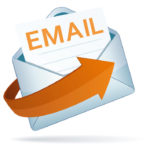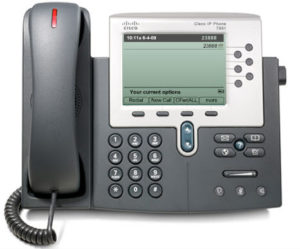There is no denying the importance of effective communication when connecting with your donors. The real question is: How can you make sure the communication you do have is meaningful? These days pushing information is easy, the challenge is not to push but to engage your donors. Donors and supporters are being inundated with materials and requests. We want to help you provide information that resonates, motivates, and affirms your donors.
Below are six-essential methods of communication, take a moment and do a quick self-assessment and see if your organization is connecting with excellence:
1. Email
Email is certainly convenient. It can also be relatively easy to distribute with little to no cost to your organization. Here are some best-practices to help you stand out in your donors inbox:
- Use Headings: Ensure the subject of your email is clear and gets attention. In the body insert headings that call attention to various topics within your message. This allows your donor to skim the message and get the gist of your email. It also allows them to jump to the portion that is most valuable to them. (i.e., Update On Current Project, How You Can Help, Current Needs, etc.)
- Updates on Your Project/Mission: When a donor is inspired to give to a cause it is generally because their heart was compelled. Keep them engaged and passionate about your mission by bringing regular updates on your progress and success. Be sure to include your donors as a part of your celebrations and highlights. Rather than say, “We were able to complete the building project in Mexico this past August.” Pat your donors on the back, “Because of your support, the building project in Mexico was completed on time. We could not have done this without you.”
- Personalize: Greet your donors by first name, get their attention. Think of how many emails you delete each day – even from organizations you care about. Personalization can motivate them to click in rather than click delete.
- Personal Stories: Reach out to your donors who have contributed to a specific project/mission of your organization. Sometimes we forget to share the ending of the story with our donors. Success stories are a great way to reflect a return on their investment. Again, remember to make it personal, “Joan, I wanted to share with you how your consistent monthly donation has made a lasting impact on the life of…..” “It’s generous donors like you who make impacting the lives of families such as the Millers possible. Thank you!”
- Toot Your Horn: Let your donors know why you are great and then let them know they are part of that greatness. You’re in this together. You need your donors and they are invested in what you do– so they support you. Your donors are also your ambassadors to the community. Giving them highlights and successes they can share and be proud of only helps spread the fire. Sharing your successes with your donors gives them the tools to tout you and your mission and reinforces why they support you. Don’t be shy!
Tip: Most emails are not read at a desktop computer so be sure to use a format that will display well on a mobile device.
2. Handwritten Notes: A Lost Art
Remember the last time you got a handwritten note in the mail? Didn’t it feel significant and different than just another email? Notes are so personal and so rare these days. While more time consuming than shooting out an email, there is overwhelming evidence that supports the effectiveness of a handwritten communication to donors. Consider sending a handwritten thank you to your recurring donors from the past 12-months. What a powerful and genuine way to express your appreciation to your donors. Donor cultivation and stewardship can often become overworked with process, and they can feel that. Slow down, take a moment and ensure they feel valued enough to continue giving.
Take this example and make it your own:
Matthew,
Just a quick note to say, “Thank you!” We could not do this without you. We are able to impact our community in powerful ways because of your decision to be a monthly supporter. It’s because of you, we were able to…. <list your recent successes>.
You are an essential part of who we are here at <Name of your Organization> and we appreciate you!
Most Sincerely,
Tip: Keep it real! Using a font that looks like handwriting is not the same thing and might come across as less than sincere.
3. The Phone
A phone call is and incredible way to build on the relationship and further establish trust with your donors. Sometimes donors can feel invisible in the big pool of supporters. This is a great time to get to know them a little better and understand why they’ve chosen you to receive their hard-earned funds. That is priceless information as you work on donor cultivation and giving strategies.
When you make a call to thank your donor – remember to do just that. Don’t ask for anything else. If your “thank you” turns into an “ask” it can make the intention of your call seem manipulative. Keep it short and sincere. They will appreciate the fact that you thought enough to call and thank them and those warm-fuzzies will stay with them after you hang up.
Tip: There is certainly a time to call donors and ask for support. When doing a “thank you” call keep it to just that. Also, be sensitive to how open the donor is to talking. Ask if they are busy and keep the call short.
4. Website
Your website is the cornerstone of communication for your organization (if it’s not, it needs to be). Visitors to your site should be able to quickly and easily learn about your mission and the impact you are making. Provide the opportunity to dig deeper for more details as well. A “call to action” or more specifically your [Donate Now] button should be visible in a prominent place on every page. You never know when a donor may will respond to your mission and give. Make it quick and easy to complete their donation so they stay inspired and have a good experience. You don’t want them to hesitate or struggle to find out how to give: one-click away is the gold standard!
Tip: Mobile-friendly is important! Many people will be drawn to your site from an email or social media, which they’ll most likely be reading from their phone. It’s important that your website is easy to navigate and looks top-notch in any format.
5. Social Media
We don’t need to post stats about the value of engaging with your donor base in social media. If the ALS Ice Bucket Challenge has taught us nothing else it’s proven that social media is where it’s at. Use social media to keep your donors updated about your mission, upcoming events, and current needs. This is a great place to run holiday giving or short campaigns with little overhead. You not only keep them engaged and close to your mission, but you give them something positive to share with their circle of influence.
Tip: Check out the etiquette for each platform. For example, it’s recommended to post 3 – 10 times per week on Facebook but up to 5 times per day on Twitter. Here’s a helpful guide.
6. Donation Page Categories

Your donation page is a great opportunity to communicate with donors about the best ways to help. They ended up on that page because they want to help. Make sure your needs are clear. Include various ways to give so that any level of donor can feel welcomed and able to participate. Highlight your current campaign or various projects that are important. Wording like “Donate 15 dollars a month to ensure a needy child has warm meals” can encourage a recurring gift. Recurring gifts are great at stabilizing your income so you can be pro-active in your mission.
Tip: Some categories are great but too many can be a discouragement. Highlight what’s important to you and double-check with your board to make sure you don’t run into problems with any restricted gifts.

